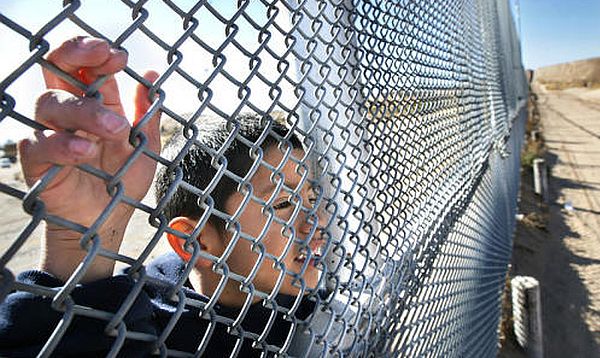McAllen, Texas - With border authorities in South Texas overwhelmed by a surge of undocumented children traveling by themselves, the Department of Homeland Security has declared a crisis this week and has set up an emergency shelter for the youths in San Antonio, Texas.
In the past two weeks, more than 1,000 children, some as young as 5 or 6 years old, were apprehended near McAllen, Texas while illegally crossing the border - the majority from Central America, including Guatemala, Honduras, and El Salvador. The continuous numbers of unaccompanied juveniles is straining facilities for Homeland Security and the Department of Health and Human Services.
After seeing the children packed in a Border Patrol station in McAllen during a recent visit, Homeland Security Secretary Jeh Johnson last week declared "a level-four condition of readiness" in the Rio Grande Valley. The alert was an official recognition that federal agencies overseeing borders, immigration enforcement, and child welfare had been outstripped by a sudden increase in unattended minors in recent weeks.
As part of the plan, the Department of Health and Human Services opened an emergency shelter over the weekend at Lackland Air Force Base in San Antonio and will begin transferring youths there by land and air. The shelter can accommodate up to 1,000 children, officials said.
According to officials, the level-four alert is the highest for agencies handling children crossing the border illegally, and allows Homeland Security officials to call on emergency resources from other agencies.
"Secretary Johnson is sending additional staff to South Texas to coordinate DHS and interagency efforts to meet the immediate needs of the migrants, including medical care ... and to address other processing and enforcement concerns," said Marsha Catron, a spokeswoman for the Department of Homeland Security
The law prohibits Homeland Security from immediately deporting the children if they are not from Canada or Mexico. Instead, the children are turned over to a refugee resettlement office that is part of the Health Department within 72 hours of being taken into custody. Health officials must try to find relatives or other adults in the United States who can care for them while their immigration cases move through the courts. A search that can take several weeks or more.
The flow of child migrants has been building since 2011, when 4,059 unaccompanied youths were apprehended by border agents. Last year more than 21,000 minors were caught, and Border Patrol officials had said they were expecting more than 60,000 this year. But that projection has already been exceeded.
"Most of the time, they're getting released to relatives in the US," said Chris Cabrera, vice president of the National Border Patrol Council in the Rio Grande Valley. "There's nowhere to put them, so they're released on their own recognizance and have a pending court date. I'd say between 95 and 97 percent of adults or youths don't show up for court."
Mr. Johnson said Pentagon officials agreed this week to lend the space at Lackland, where health officials will run a shelter for up to four months. The base was also used as a temporary shelter for unaccompanied migrant youths in 2012. It became the focus of controversy when Texas Governor Rick Perry objected, accusing the federal government of encouraging illegal migration by sheltering the young people there.
Secretary Johnson said he had recently spoken with the ambassadors from Mexico and the three Central American countries to seek their cooperation, and had begun a publicity campaign to dissuade youths from embarking for the US.
Officials say that the recent spike in children crossing the border alone may be attributed to several causes, including fleeing gang violence at home, an increase in poor economic conditions in their home countries, and some are seeking to reunite with parents who may have left them with relatives in their native countries. A majority of unaccompanied minors are not eligible to remain legally in the United States and are eventually returned home.
Source: NYTimes.com


